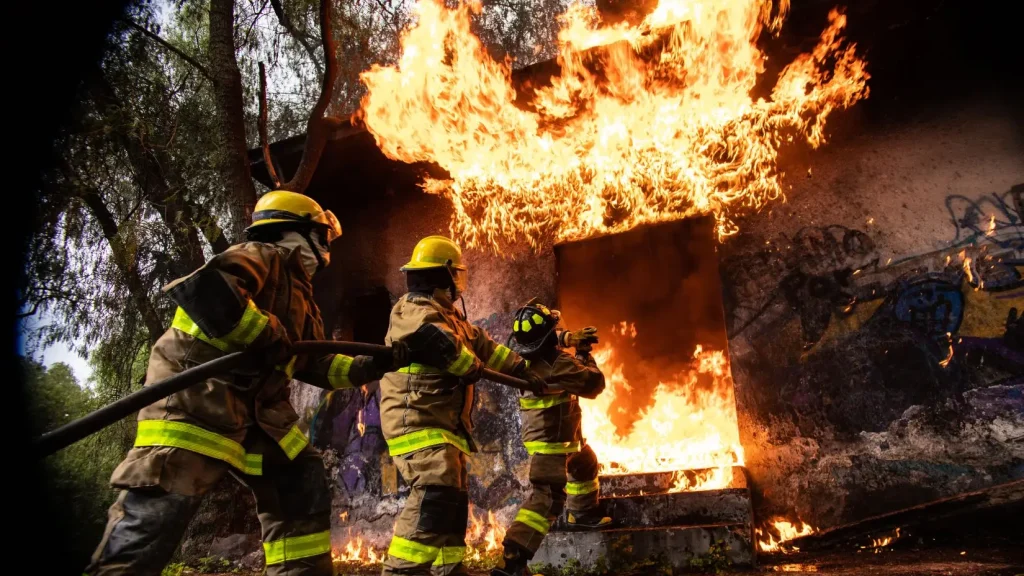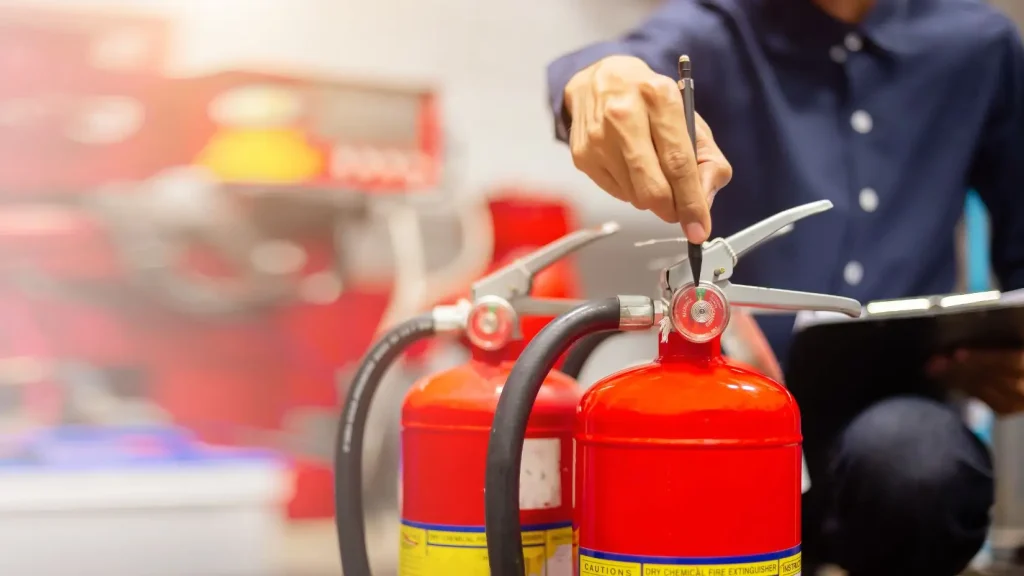Duquesne Fire Kills One and Injures Another as Four Homes Are Lost
I woke up to the news of the Duquesne house fire like many of you—shocked, unsettled, and asking how something like this could happen so fast. Around 1:20 a.m. on a quiet Thursday morning, flames tore through a residential block on North Third Street in Duquesne, Pennsylvania. Four homes were hit.
One person didn’t make it out alive. Another was rushed to the hospital. Neighbors ran into the street. Some jumped out of windows. And now, a community is left grieving and rebuilding.
This wasn’t just another house fire. It was one of those moments that grabs you by the collar and makes you think: What would I do if that was my home?
And that’s why we need to talk about it—not just what happened, but why it matters, what we’re missing in the coverage, and how you can protect yourself and your family.
But first, let’s take a closer look at exactly what happened that night—and why it shook the neighborhood so deeply.
What Really Happened That Night in Duquesne?
If you’ve been following the news, you probably saw the footage. I did too—and I still can’t shake it.
It all happened just after 1:20 a.m. on North Third Street in Duquesne. According to CBS News Pittsburgh, the fire started fast and spread even faster. One house was completely destroyed. Three more were badly damaged—some by flames, others by heat and smoke that warped everything inside.
By the time firefighters arrived, it was chaos. One person didn’t make it out. Another was rushed to the hospital. Someone else jumped from a second-story window just to survive. Can you imagine that kind of decision? You’re half-asleep, it’s dark, your house is on fire—and the only way out is through glass.
There’s no warning for a fire like this. No slow buildup. It just happens. And in minutes, families were standing outside barefoot, watching everything they owned go up in smoke.
You don’t forget nights like that. And I doubt Duquesne ever will.
This pain isn’t unique to Duquesne. In Wake County, two teens and a man lost their lives in a similar fire tragedy—different city, same heartbreak.
The People Behind the Headlines
Let me be real with you—fires like this are more than just property damage. They tear through lives.
I read about Juanita Jennings, one of the neighbors who witnessed it all. She said she heard someone screaming outside and saw flames shooting out like lava. That image stuck with me—lava. That’s how hot and fast this thing moved.
One man told reporters he jumped from his upstairs window barefoot. He didn’t think—he just moved. That’s what survival looks like when you’re trapped and the smoke is closing in.
We see numbers in news reports—one dead, one hospitalized, four homes damaged—but those aren’t numbers. They’re people. Kids who lost their bedrooms. Moms who left their family albums inside. Neighbors who will never sleep the same way again.
And if you’ve ever lost something in a disaster—even just a small fire—you know that grief doesn’t come all at once. It comes in waves.
That’s why this story matters. Not because it made the news. But because it made real people hurt.
If you live nearby or have been through something similar, share your story in the comments. Your voice might help someone feel less alone.
How Emergency Crews Responded — and What They Faced

If you’re wondering how quickly help arrived, the answer is—fast. But even that wasn’t fast enough to stop what this fire became.
Firefighters from Duquesne were the first on the scene, but soon they had backup from West Mifflin and other nearby departments. This was a two-alarm fire, which means it was big enough to require multiple stations and serious manpower.
WTAE News reported that crews battled flames for hours. They had to deal with tight spaces, old buildings packed closely together, and intense heat that made it almost impossible to get inside safely.
I know we sometimes assume firefighters can save every home—but when fire moves like this, even the best crews can’t always stop it in time.
Investigators from the Allegheny County Fire Marshal’s office and homicide detectives were also called in. That happens anytime there’s a fatality, but it still adds weight to the scene. They’re treating this seriously—and that’s the right call.
You and I might never know everything they find. But what matters is that they’re asking the hard questions: Where did it start? Was it preventable? Was anything overlooked?
We’ve also seen ongoing updates and neighborhood reactions shared through WhatsApp safety update channels that track incidents like this in real-time.
The Big Question No One Can Answer Yet: What Caused It?
Here’s where things get frustrating—because right now, we still don’t know exactly what caused the fire.
The investigators haven’t released their findings. And with the level of destruction they’re dealing with, it could take days—or even weeks—to get real answers.
But here’s what I can tell you: most house fires like this don’t happen randomly. They’re often tied to everyday stuff—old wiring, space heaters, overloaded power strips, a stove left on for just a little too long.
You might think, “That won’t happen to me.” But I’ve seen it too many times.
According to the National Fire Protection Association, working smoke alarms reduce your chance of dying in a house fire by 50%. Half. That’s huge.
So even if we don’t know the cause of this fire yet, you and I can still do something about it. Go check your smoke detectors today. Test them. Replace the batteries. Look around your house—what’s plugged in, what’s heating up, what’s overdue for a check?
Because while the cause of this fire might still be a mystery, the lesson is already clear: prepare now, not after.
Is This Part of a Bigger Pattern? Fires in Duquesne Over the Years
This isn’t the first time Duquesne has dealt with something like this—and I doubt it’ll be the last.
If you look back just a few years, you’ll find a disturbing pattern. Older homes. Dense neighborhoods. Delayed fire prevention upgrades. It’s like watching the same nightmare on repeat.
In 2022, there was another major house fire in Duquesne that displaced a family and caused major structural damage. In that case, a small space heater tipped the scale. Another incident in 2021 involved faulty electrical wiring in a home that hadn’t been updated in decades.
I’m not bringing this up to stir fear—but to show you this is bigger than one street or one night.
You and I can’t change the past. But we can start asking tougher questions now:
- Are local codes strong enough?
- Are older homes being inspected often enough?
- Do low-income families have access to basic fire safety tools?
If you’re a homeowner or renter in this area, don’t wait for the next fire to ask these.
These patterns aren’t just limited to Duquesne. In Raleigh, North Carolina, two homes were destroyed within 30 minutes in a fire that displaced entire families—proving just how quickly fire spreads in older neighborhoods.
What You Can Actually Do: Protecting Your Home & Family

Here’s where it gets practical.
If you’re like most people, this kind of story makes you anxious for a day or two—and then life moves on. But let’s not do that this time. Let’s actually take action.
Here’s a short checklist I use myself (and share with friends):
- Check smoke alarms — One in every room. Replace batteries twice a year.
- Create a two-exit plan — If your front door is blocked, where else can you go?
- Have a fire-safe night routine — Turn off heaters, check cords, unplug devices.
- Talk to your family about it — Yes, even your kids. Especially your kids.
And if you rent, ask your landlord:
“Are the smoke alarms working?”
“Has the wiring been inspected recently?”
You have a right to safety—and they have a responsibility to provide it.
These steps don’t take much time. But they do save lives. I’ve seen it.
In Conway, a police officer was critically injured in a devastating home fire—and like Duquesne, the city had to respond quickly and rethink how it supports survivors long after the flames are gone.
What Happens Next — and Why You Should Care?
The fire may be out, but this story isn’t over.
Investigators are still combing through the wreckage, trying to confirm where and how it started. That’s going to take time, especially with one fatality involved.
Meanwhile, families are beginning the long process of starting over. Insurance claims. Temporary housing. Grief counseling. Some might stay in Duquesne. Others may not.
City leaders haven’t released a detailed plan yet—but I’ll be watching. You should too. Whether you live down the street or just care about public safety, we’ve all got skin in the game when it comes to housing, infrastructure, and emergency response.
And maybe this is the moment where something changes—where attention turns into action.
Let’s not waste it.
Final Thoughts
I’ve covered a lot of tragic stories over the years, but this one hits different. Maybe because it happened on a quiet street, in the middle of the night, to people who were just living their lives.
What happened in Duquesne isn’t just a headline. It’s a reminder that safety isn’t guaranteed—and neither is tomorrow.
If you take anything from this, let it be this: preparation isn’t panic. It’s love in action. It’s choosing to protect what you can, while you still can.
And if you’re not affected directly? That’s a gift. Use it to show up for someone who was. Share their story. Donate if you can. Check on your neighbor. Be the reason someone else feels a little less alone tonight.
Because what burned down in Duquesne was more than just wood and walls. It was a piece of someone’s life. And it’s on all of us to help rebuild it.
Want more fire safety guides and real incident breakdowns like this? Visit our site’s home security section for more actionable stories and tips.
Disclaimer: This article is based on publicly available news, interviews, and verified sources. Details may change as new updates emerge from official investigations. Always refer to local authorities for emergency instructions and verified aid channels.


